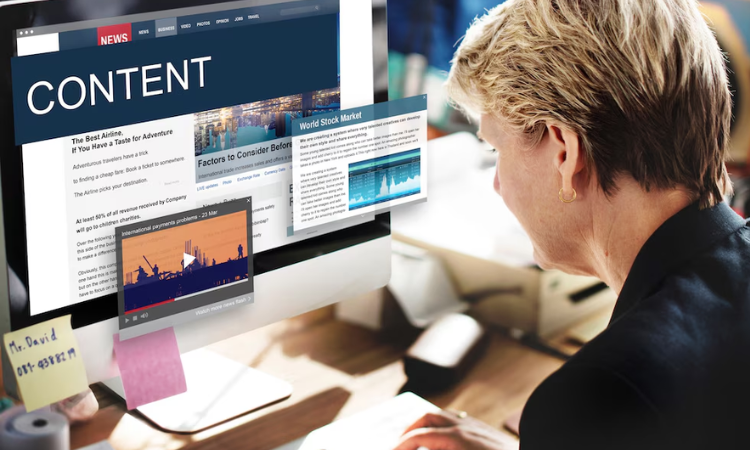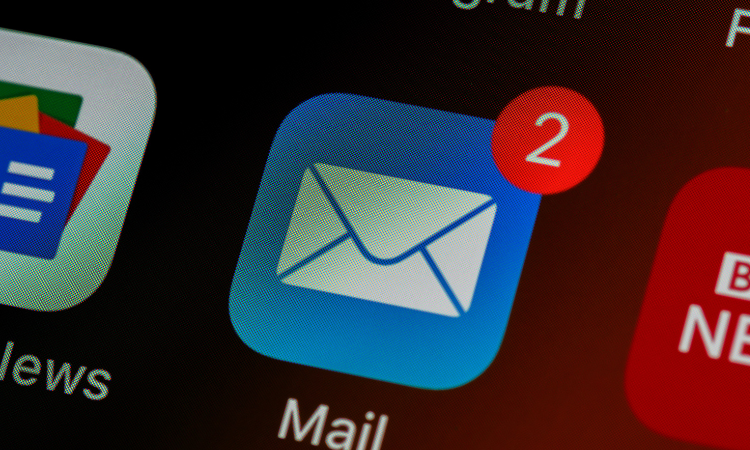You’ve done the hard work—deep research, compelling writing, and valuable insights. But if your content isn’t driving engagement, something is missing.
- Visitors leave before finishing the article → Your content isn’t holding their attention.
- Conversions are low → Your content isn’t guiding users toward action.
- Traffic isn’t growing → Your content isn’t optimized for discovery or engagement.
Why? Because great content isn’t just about what you say—it’s about how your audience experiences it.
Today’s content landscape is diverse—articles, videos, podcasts, social media, and infographics. Consumers interact across multiple platforms and expect seamless, immersive experiences. They have zero patience for cluttered layouts, slow-loading pages, or frustrating interruptions. If your content fails to deliver a smooth, engaging journey, it won’t perform—no matter how valuable it is.
A strong content experience ensures that your audience:
- Stays engaged, regardless of the format
- Finds value effortlessly, without frustration
- Takes action—subscribe, share, or convert
Simply publishing content isn’t enough. To stand out in today’s overcrowded digital world, you need to master how your content is structured, presented, and consumed.
In this blog, we’ll explore what content experience is, why it matters, and how you can optimize it to maximize engagement, increase traffic, and drive more conversions.
Let’s dive in!
TL;DR
- Content experience is how audiences consume, interact with, and engage with your content, shaping accessibility, presentation, and relevance.
- A strong content experience boosts engagement, improves retention, aligns with the customer journey, strengthens brand perception, and increases conversions.
- Tailoring content based on user behavior and intent enhances relevance and improves the overall experience.
- It differs from UX (usability and functionality) and CX (overall customer interactions) but plays a crucial role in both.
- A great content experience improves search rankings, reduces bounce rates, and increases user actions like sign-ups and purchases.
- Measure content experience effectiveness using website feedback tools like Zonka Feedback which provide direct audience insights to optimize content. Try Zonka Feedback’s 14-day free trial or schedule a demo to see how it works!
Elevate Every Read with Targeted Article Surveys
Uncover valuable reader insights and refine your content experience—start with Zonka Feedback today!

What is Content Experience?
Content experience isn’t just about words—it’s about how users find, consume, and engage with your content. It’s the combination of content and context, where each piece isn’t just an isolated article, blog, or video but part of a larger, interconnected experience.
Your content experience isn’t just about what you publish—it’s about how it’s packaged, presented, and delivered across different touchpoints. It includes:
- Accessibility – Is your content easy to find, navigate, and consume?
- Presentation – Does the layout, typography, format, and design enhance or hinder readability?
- Engagement – Does your content encourage interaction—comments, shares, or further exploration?
- Relevance & Personalization – Is your content tailored to your audience’s needs and delivered at the right time?
- Consistency – Does your content flow logically across different platforms and formats?
A strong content experience ensures your audience doesn’t just consume content—it keeps them engaged, builds trust, and moves them along their journey from casual readers to loyal customers.
Why Content Experience Matters
Creating great content is just the first step—what truly matters is how easily your audience can find, interact with, and stay engaged with it. Even the most valuable content can fail if the experience is frustrating. If users can’t navigate smoothly, they won’t stay, engage, or convert. Here’s why content experience is crucial:
- Bridges the Gap Between Content and Engagement – A beautifully written blog is useless if buried under pop-ups, slow load times, or poor formatting. Users will leave before they even start reading. A well-structured experience keeps users engaged.
- Guides Users Seamlessly – Your content should naturally lead users to the next step—reading another article, signing up, or making a purchase. Confusing navigation or a lack of CTAs leaves potential conversions on the table.
- Increases Time on Page & Retention – A well-structured, visually appealing layout encourages deeper exploration, reducing bounce rates and keeping visitors engaged.
- Improves Retention and Impact – If consuming your content feels like work, users won’t return. A great experience makes content enjoyable, accessible, and valuable, keeping audiences engaged long-term.
- Maximizes Content ROI– A well-optimized experience ensures every content piece serves its purpose—educating, persuading, or converting. Without the right experience, even high-quality content can underperform.
- Boosts SEO & Conversions – Google prioritizes user-friendly experiences—faster load times, lower bounce rates, and engaging content all boost search rankings. A strong content experience signals relevance and value, directly impacting conversions. Optimize for Core Web Vitals (LCP, FID, CLS) to enhance SEO and user engagement.
Your content shouldn’t just exist—it should flow seamlessly, guiding your audience while delivering value at every step.
Key Components of Great Content Experience
A powerful content experience goes beyond just creating content—it’s about ensuring that content is relevant, accessible, and impactful at every stage of the customer journey. To build a great content experience, you need a strong foundation. Here are the five key components that make it work:
1. Content Audit & Structure: Laying the Foundation
Before improving your content experience, you need to understand what’s working, what’s outdated, and what needs improvement. A content audit helps identify high-performing pieces that resonate with your audience, pinpoint content gaps, and remove duplicate or irrelevant content.
Once you assess what’s in your content library, focus on structuring your content for seamless navigation and accessibility. If users struggle to find information, they won’t stay engaged for long.
- Conduct a content audit to evaluate what’s performing well and what needs improvement.
- Remove outdated or duplicate content to keep your library fresh.
- Optimize structure with clear headings, bullet points, and scannable layouts.
- Ensure seamless navigation with internal links, breadcrumbs, and content hubs.
💡 Pro Tip: Don’t just look inward—analyze your competitors’ content strategy using tools like Ahrefs or SEMRush and get insights into trends, gaps, and opportunities to differentiate your brand.
2. Content Creation & Multi-Format Strategy
Content isn’t just about blogs—it’s about delivering valuable, engaging stories across multiple formats. Not all users engage with content the same way—some prefer in-depth guides, while others prefer videos, infographics, or interactive elements. A strong content strategy ensures content is searchable, relevant, and visually engaging while catering to different user preferences.
- Conduct keyword research to align content with audience search intent.
- Experiment with different formats (blogs, videos, infographics, interactive tools).
- Ensure content has a logical flow, guiding users seamlessly through their journey.
- Repurpose long-form content into multiple bite-sized assets for social media and email.
💡 Pro Tip: Turn your most valuable blog posts into interactive experiences—convert them into videos, podcasts, or infographics to engage more users.
3. Personalization & Accessibility: Enhancing User Experience
Users today expect a tailored content experience—they want relevant, personalized, and easy-to-consume content. Personalization means showing the right content to the right user at the right time, while accessibility ensures all users, including those with disabilities, can fully engage with your content.
- Use AI-driven content recommendations to serve personalized content based on behavior.
- Implement dynamic content (customized headlines, CTAs, and offers based on user intent).
- Ensure content is mobile-friendly, with clear font sizes and proper contrast.
- Optimize for accessibility with alt text, video captions, transcripts, and multi-language support.
💡 Pro Tip: Set up behavior-based triggers to recommend relevant content—if a visitor reads an article about product A, suggest related content or a case study about product A.
4. Content Distribution & Engagement: Maximizing Visibility & Interaction
Even the best content won’t drive results if no one sees it. A solid distribution strategy ensures content reaches the right audience across multiple channels while engagement tactics encourage users to take meaningful actions.
- Owned media – Sharing content on your website, blog, newsletters, and brand social media.
- Earned media – Leveraging PR, guest posts, influencer mentions, and organic shares.
- Paid media – Promoting through paid ads, sponsored content, and native content discovery platforms.
- Repurposing content – Turning long-form pieces (like an e-book) into multiple formats—blog posts, infographics, short videos, and social media snippets.
💡 Pro Tip: Schedule your top-performing content for recurring distribution across different time zones to maximize visibility.
5. Performance & Continuous Optimization: Measuring What Matters
Content experience is an ongoing process. Tracking engagement, retention, and conversion metrics helps you continuously refine your content strategy and ultimately generate SaaS leads more effectively. Understanding which content performs best allows you to double down on successful formats while improving underperforming areas.
- Engagement Metrics – Page views, time on site, scroll depth, and social shares.
- Retention Metrics – Returning visitors, pages per visit, and repeat engagement.
- Conversion Metrics – Leads generated, sign-ups, and purchases.
- User Feedback Metrics – Insights from in-app surveys, website feedback widgets, and direct customer feedback.
- Optimization Actions – Improve CTAs, restructure content, update outdated pages, and refine distribution strategies.
💡 Pro Tip: Set up monthly content performance reviews—identify content that’s losing traffic and refresh it with updated information and insights.
Content Experience vs. Content Marketing: What’s the Difference?
You’ve probably heard the buzz around content marketing and content experience, but do they mean the same thing? Not quite. While they work hand in hand, they serve different purposes—think of them as two sides of the same coin.
Content Marketing: Captures Attention
Imagine you’re walking through a mall, and you spot a store with an eye-catching display. You’re drawn in by a clever ad or an exciting product demo. That’s what content marketing does—it’s all about grabbing attention and sparking interest through high-quality, valuable content. Be it:
- A well-crafted blog post that ranks on Google.
- A YouTube channel with helpful how-to videos.
- A brand’s Instagram account is filled with engaging posts and reels.
In short, content marketing is about creating and distributing content to engage an audience and build trust. It’s the magnet that pulls people in.
Content Experience: Keeping Them Hooked
Once people find your content, what happens next? A great content experience:
- Makes it easy to find and logically organized.
- Help readers navigate effortlessly from one piece to another.
- Guides the user toward a business goal (like signing up, purchasing, or learning more).
In short, content marketing draws people in, but content experience keeps them engaged. Without a seamless experience, even the best content won’t convert visitors into customers.
How Content Experience Differs from UX and Customer Experience
Content experience, user experience, and customer experience all shape how audiences interact with your brand—but they focus on different aspects. Understanding these differences helps you deliver a seamless, engaging experience at every touchpoint.
1. Content Experience vs. User Experience
User experience is about usability and functionality—how easy it is to navigate a website, interact with an app, or complete an action. It focuses on elements like navigation, interface design, and speed.
Content experience, on the other hand, is about how users engage with your content.
Think of it this way:
- UX ensures your website is easy to navigate.
- Content experience ensures the blog they find is engaging, relevant, and valuable.
UX is the journey; content experience is the story.
2. Content Experience vs. Customer Experience
Customer experience covers the entire customer journey—from discovering your brand to post-purchase interactions. It includes sales, support, and every customer-facing experience.
Content experience focuses specifically on how customers consume and engage with your content—whether it’s a blog, email, or knowledge base.
Example:
- CX ensures that contacting customer support is seamless.
- Content experience ensures the FAQ page is easy to read, visually appealing, and actually helpful.
CX is the big picture; content experience refines the details.
While UX ensures the platform works and CX manages the full customer journey, content experience makes sure that every piece of content contributes to a seamless, engaging brand experience.
Best Practices for Creating an Exceptional Content Experience
A great content experience doesn’t happen by chance—it’s intentional, strategic, and audience-focused. Here are five best practices to ensure your content stands out, resonates, and keeps your audience engaged.
1. Make a Strong First Impression
Your audience forms an opinion about your content within seconds of interacting with it. If a visitor encounters a confusing interface or an unappealing design, they are likely to leave immediately, regardless of the content's quality.
💡 Tips to Improve First Impressions
- Design an intuitive website interface with a clean and visually appealing layout.
- Optimize navigation so that content is easy to locate.
- Implement a mobile-friendly design to enhance the experience for users on the go.
A seamless and attractive design creates a positive first impression and increases the likelihood of meaningful user engagement.
2. Audit Your Content Regularly
Start by evaluating your existing content to identify what’s working and what’s not. A thorough content audit helps you:
- Spot outdated or duplicate content.
- Pinpoint poorly performing assets.
- Identify gaps in your content strategy.
To enhance the overall content experience, map out the content journey for different segments of your target audience. Ensure that the flow aligns with their goals and consider improvements such as grouping content logically or cross-linking related pieces.
These steps can improve the quality of content and provide users with a more intuitive and relevant experience across various platforms, such as digital reports or interactive newsletters.
3. Prioritize User Testing
User testing provides critical insights into how your audience interacts with your content. Gather feedback from real users, including those unfamiliar with your brand, to gain fresh perspectives. Testing helps optimize your content marketing strategy and ensures a smoother customer journey.
Key Questions to Explore
- How do users discover and access your content across different experience platforms?
- Are there obstacles preventing them from finding what they need?
- Is the transition between content pieces seamless, offering users a complete picture of your offerings?
By allowing users to navigate through your content, you’ll uncover pain points and opportunities for improvement, ensuring the content meets their expectations while enhancing engagement and retention.
4. Review UX Writing and Microcopy
In the digital world, microcopy—titles, labels, summaries, link text, and button copy—plays a crucial role in guiding users smoothly through your content. These small but impactful elements are key to improving content quality and ensuring users can quickly understand and navigate content.
Checklist for microcopy review
- Is it clear, concise, and actionable?
- Does it accurately represent the content it refers to?
- Does it encourage further exploration and engagement, particularly for your target audience?
By ensuring that the microcopy is intuitive, you can significantly enhance the content experience, especially in formats like embedded forms or content produced for digital magazines. This step also supports more personalized and engaging experiences for visitors.
5. Make Your Content a Two-Way Conversation
Great content isn’t just something people read—it’s something they engage with. If your audience is just scrolling and moving on, you’re missing an opportunity. Encourage interaction and keep the conversation going!
- Ask questions at the end of your content—prompt readers to share their thoughts or experiences.
- Invite discussion—enable comments and actually reply to them. A real conversation builds trust.
- Make sharing effortless—add social share buttons so readers can spread the word.
You can also use exit overlays, pop-ups, or banners to nudge visitors into taking action, whether that’s checking out more content or filling out a form. And if you have support video content, use it for engagement—videos are a great way to keep people hooked and interact with your brand.
Framework to Craft a Winning Content Experience
Once you have the foundation in place, the next step is crafting a seamless content experience plan. This revolves around three core aspects that shape how your audience interacts with your content:
1. Content Organization: No One Likes a Mess
Ever walked into a cluttered store where you can’t find anything? That’s what a poorly structured content experience feels like. Organizing your content logically—by topic, audience type, or stage in the journey—helps people find what they need without frustration.
- Use categories, tags, and search filters to make navigation effortless.
- Add anchor links in long-form content so readers can jump to what matters most.
- Implement smart recommendations that guide visitors to related content naturally.
Make it easy, intuitive, and enjoyable—so people stick around instead of bouncing away.
2. Personalization: The Right Content at the Right Time
Ever had Netflix recommend a show that’s eerily perfect for you? That’s personalization done right. Your content should work the same way—serving up exactly what your audience needs, when they need it.
- Tailor content recommendations based on their interests and behavior.
- Use dynamic landing pages that adapt based on user data.
- Create custom content journeys so they don’t have to dig for information.
The goal? Make every interaction feel like it was made just for them.
3. Engagement & Relationship Building
Think of content as more than just articles and videos—it’s a way to start and nurture conversations. Especially in longer B2B sales cycles, the right content at the right time builds trust and keeps people coming back.
- Turn content into a journey, not just a one-time read.
- Use interactive formats like quizzes, polls, and videos to keep engagement high.
- Align content with email nurture campaigns or ABM strategies to guide users seamlessly.
At the end of the day, it’s all about building a relationship, not just delivering content.
How to Measure the Effectiveness of Content Experience
A great content experience isn’t a one-time effort—it’s something you need to track, analyze, and refine continuously. Here’s how to measure its effectiveness and make data-driven improvements.
1. Track Key Engagement Metrics
Understanding how users interact with your content is the first step in measuring its effectiveness. Key engagement metrics provide valuable insights into what’s working and what needs improvement.
- Clicks & Pageviews – More impressions mean better content visibility.
- Social Shares – If people are sharing, your content is resonating.
- Bounce Rate – High bounce? Your content might not match expectations. Lowering it means you're on the right track.
- Time on Page & Scroll Depth – Helps determine whether users are skimming or consuming content in depth.
- Click-through: If CTA click-through rates are low, experiment with A/B testing different CTA placements, wording, or button colors.
💡 Pro Tip: If users are leaving too soon or not scrolling far, consider breaking up text with visuals, adding interactive elements, or making CTAs more prominent.
2. Identify Drop-Off Points with Heatmaps
If users aren’t engaging with your content, you need to know where they lose interest. Heatmaps provide a visual representation of user behavior, showing which areas attract the most attention and where users drop off.
- Scroll Maps – Identify the exact point where users stop scrolling to optimize content placement.
- Click Maps – See which elements attract the most interactions and which are ignored.
- Mouse Tracking – Understand navigation behavior to improve website usability and content flow.
By analyzing heatmaps, you can identify friction points, improve readability, and ensure key information is placed where users are most engaged.
3. Understand User Sentiment
Numbers alone don’t reveal the full picture—how your audience feels about your content matters just as much as their actions. By sentiment analysis, you can uncover hidden pain points and areas of improvement.
- Sentiment Analysis – Review comments and feedback to see if users find your content helpful, confusing, or frustrating. Patterns in sentiment can highlight areas that need refining.
- Survey Responses – Directly asking users about their experience provides qualitative insights that metrics alone can’t capture. Questions about clarity, usefulness, and layout can pinpoint specific improvements.
- Navigation Behavior – Tracking how users move through your content helps identify friction points. Are they bouncing off quickly? Struggling to find relevant information? These insights can guide content restructuring for a smoother experience.
💡 Pro Tip: If sentiment analysis shows consistent confusion or frustration, refine content formatting, improve explanations, or restructure page layouts for better flow.
4. Create a Continuous Feedback Loop
A great content experience isn’t set-and-forget—it requires ongoing tracking, analysis, and refinement. Continuous feedback helps ensure your content stays relevant, engaging, and user-friendly.
- In-App Surveys & Website Polls: Capture real-time website feedback from visitors.
- Exit-Intent Surveys: Capture lost leads before they leave with exit-intent surveys.
- A/B Testing: Experiment with different headlines, CTA placements, and content formats to optimize engagement.
- Content Refresh Strategy: Regularly update outdated blog posts, improve visuals, and optimize layouts based on analytics.
Why It Matters: Content experience isn’t static—by continuously measuring and optimizing, you ensure your content remains engaging and conversion-friendly over time.
Key Takeaways
A great content experience goes beyond words on a page—it ensures every interaction is seamless, engaging, and action-driven. It’s what keeps readers exploring, builds trust, and drives conversions. When content is structured for clarity, personalized for relevance, and optimized for engagement, it transforms from static information into an immersive journey.
But even the best content needs constant refinement. Tracking engagement, identifying friction points, and gathering real-time feedback are essential to continuous improvement.
By optimizing content flow, readability, performance, and consistency, you don’t just create content—you create an experience that retains readers, builds trust, and drives business growth.
But how do you know if your content is resonating? Feedback is key.
For seamless feedback collection on how your content resonates with your audience, try out Zonka Feedback. With our article feedback survey tool, you can instantly gauge visitor sentiment, gather insights on user experience, and continuously refine your content strategy for maximum impact.
Ready to transform your feedback process? You can sign up for a 14-day free trial or schedule a demo with Zonka Feedback now!











